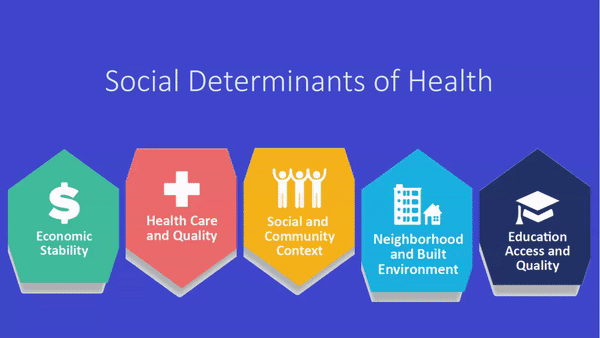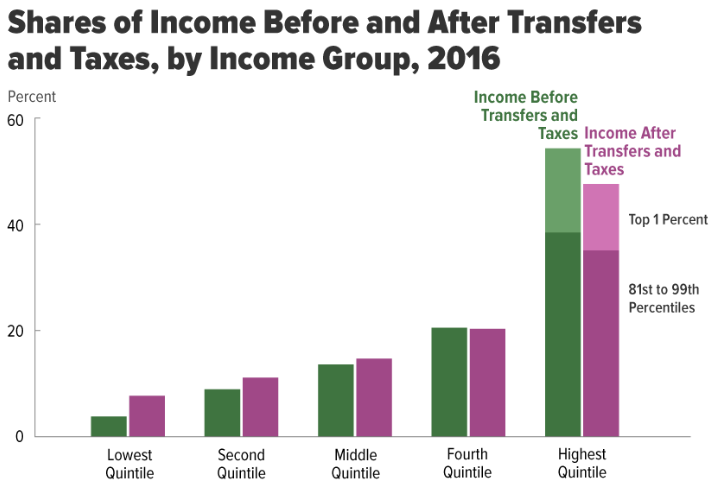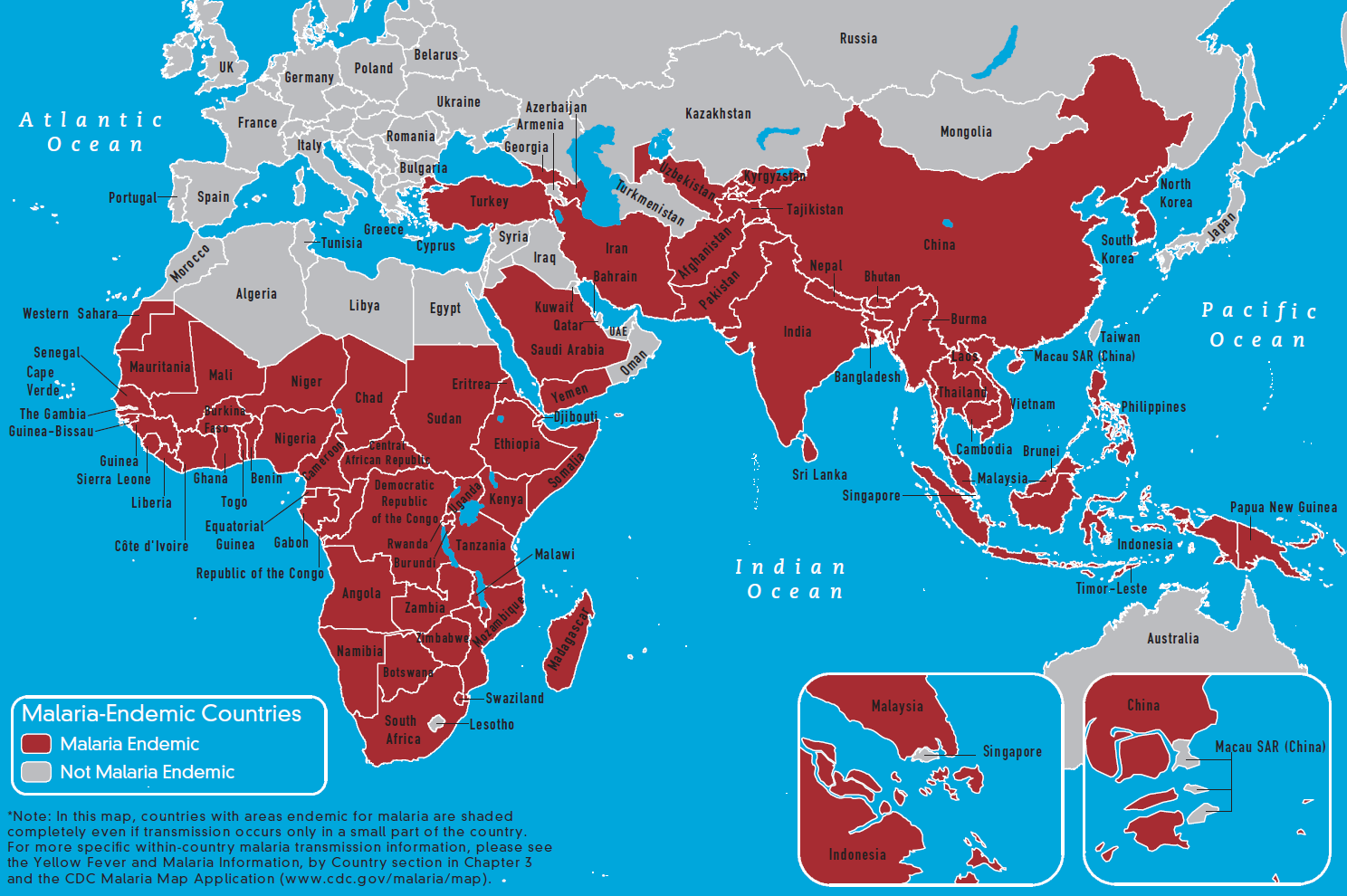|
Inequality In Disease
Social epidemiology focuses on the patterns in morbidity and mortality rates that emerge as a result of social characteristics. While an individual's lifestyle choices or family history may place him or her at an increased risk for developing certain illnesses, there are social inequalities in health that cannot be explained by individual factors. Variations in health outcomes in the United States are attributed to several social characteristics, such as gender, race, socioeconomic status, the environment, and educational attainment. Inequalities in any or all of these social categories can contribute to health disparities, with some groups placed at an increased risk for acquiring chronic diseases than others. For example, cardiovascular disease is the leading cause of death in the United States, followed closely by cancer, with the fifth most deadly being diabetes. The general risk factors associated with these diseases include obesity and poor diet, tobacco and alcohol use, ... [...More Info...] [...Related Items...] OR: [Wikipedia] [Google] [Baidu] |
Social Epidemiology
While epidemiology is "the study of the distribution and determinants of states of health in populations", social epidemiology is "that branch of epidemiology concerned with the way that social structures, institutions, and relationships influence health." This research includes "both specific features of, and pathways by which, societal conditions affect health". Although health research is often organized by disease categories or organ systems, theoretical development in social epidemiology is typically organized around factors that influence health (i.e., health determinants rather than health outcomes). Many social factors are thought to be relevant for a wide range of health domains. Social epidemiology can therefore address any health outcome, including chronic disease, infectious disease, mental health, and clinical outcomes or disease prognosis. Exposures of interest to social epidemiologists include individual-level measures (e.g., poverty, education, social isolation), con ... [...More Info...] [...Related Items...] OR: [Wikipedia] [Google] [Baidu] |
Pregnancy
Pregnancy is the time during which one or more offspring develops (gestation, gestates) inside a woman, woman's uterus (womb). A multiple birth, multiple pregnancy involves more than one offspring, such as with twins. Pregnancy usually occurs by sexual intercourse, but can also occur through assisted reproductive technology procedures. A pregnancy may end in a Live birth (human), live birth, a miscarriage, an Abortion#Induced, induced abortion, or a stillbirth. Childbirth typically occurs around 40 weeks from the start of the Menstruation#Onset and frequency, last menstrual period (LMP), a span known as the Gestational age (obstetrics), gestational age. This is just over nine months. Counting by Human fertilization#Fertilization age, fertilization age, the length is about 38 weeks. Pregnancy is "the presence of an implanted human embryo or fetus in the uterus"; Implantation (embryology), implantation occurs on average 8–9 days after fertilization. An ''embryo'' ... [...More Info...] [...Related Items...] OR: [Wikipedia] [Google] [Baidu] |
Social Determinants Of Health
The social determinants of health (SDOH) are the economic and social conditions that influence individual and group differences in health status. They are the health promoting factors found in one's living and working conditions (such as the distribution of income, wealth, influence, and power), rather than individual risk factors (such as behavioral risk factors or genetics) that influence the risk for a disease, or vulnerability to disease or injury. The distributions of social determinants are often shaped by public policies that reflect prevailing political ideologies of the area. The World Health Organization says that "the social determinants can be more important than health care or lifestyle choices in influencing health." and "This unequal distribution of health-damaging experiences is not in any sense a 'natural' phenomenon but is the result of a toxic combination of poor social policies, unfair economic arrangements here the already well-off and healthy become even ... [...More Info...] [...Related Items...] OR: [Wikipedia] [Google] [Baidu] |
Health Equity
Health equity arises from access to the social determinants of health, specifically from wealth, power and prestige. Individuals who have consistently been deprived of these three determinants are significantly disadvantaged from health inequities, and face worse health outcomes than those who are able to access certain resources. It is not equity to simply provide every individual with the same resources; that would be equality. In order to achieve health equity, resources must be allocated based on an individual need-based principle. According to the World Health Organization, "Health is a state of complete physical, mental and social well-being and not merely the absence of disease or infirmity". The quality of health and how health is distributed among economic and social status in a society can provide insight into the level of development within that society. Health is a basic human right and human need, and all human rights are interconnected. Thus, health must be discuss ... [...More Info...] [...Related Items...] OR: [Wikipedia] [Google] [Baidu] |
Income Inequality In The United States
Income inequality in the United States is the extent to which income is distributed in differing amounts among the American population. It has fluctuated considerably since measurements began around 1915, moving in an arc between peaks in the 1920s and 2000s, with a 30-year period of relatively lower inequality between 1950 and 1980. The U.S. has the highest level of income inequality among its (post-)industrialized peers.United Press International (UPI), June 22, 2018"U.N. Report: With 40M in Poverty, U.S. Most Unequal Developed Nation"/ref> When measured for all households, U.S. income inequality is comparable to other developed countries before taxes and transfers, but is among the highest after taxes and transfers, meaning the U.S. shifts relatively less income from higher income households to lower income households. In 2016, average market income was $15,600 for the lowest Quantile, quintile and $280,300 for the highest quintile. The degree of inequality accelerated wi ... [...More Info...] [...Related Items...] OR: [Wikipedia] [Google] [Baidu] |
Racial Disparities In Health
Race and health refers to how being identified with a specific race influences health. Race is a complex concept that has changed across chronological eras and depends on both self-identification and social recognition. In the study of race and health, scientists organize people in racial categories depending on different factors such as: phenotype, ancestry, social identity, genetic makeup and lived experience. "Race" and ethnicity often remain undifferentiated in health research. Differences in health status, health outcomes, life expectancy, and many other indicators of health in different racial and ethnic groups are well documented. Epidemiological data indicate that racial groups are unequally affected by diseases, in terms or morbidity and mortality. Some individuals in certain racial groups receive less care, have less access to resources, and live shorter lives in general. Overall, racial health disparities appear to be rooted in social disadvantages associated with ... [...More Info...] [...Related Items...] OR: [Wikipedia] [Google] [Baidu] |
Neighbourhood Effect
The neighborhood effect is an economic and social science concept that posits that neighbourhoods have either a direct or indirect effect on individual behaviors. Although the effect of the neighbourhood was already known and studied at the beginning of the 20th century and as early as the mid 19th century, it has become a popular approach after the publication of the book The Truly Disadvantaged by William Julius Wilson in 1987. Wilson's theory suggests that living in a neighbourhood seriously affected by poverty affects a wide range of individual outcomes, such as economic self-sufficiency, violence, drug use, low birthweight, and cognitive ability. Many scholars and activists consider Wilson's book, “''The Truly Disadvantaged''” the "bible" of scholarship on the neighborhood effect. “''The Truly Disadvantaged''” has been a stepping stone for a great deal of research on the neighbourhood effect, particularly on education, exploring the impacts of one's neighborhoods o ... [...More Info...] [...Related Items...] OR: [Wikipedia] [Google] [Baidu] |
Socialization
In sociology, socialization or socialisation (see spelling differences) is the process of internalizing the norms and ideologies of society. Socialization encompasses both learning and teaching and is thus "the means by which social and cultural continuity are attained".Clausen, John A. (ed.) (1968) ''Socialisation and Society'', Boston: Little Brown and Company Socialization is strongly connected to developmental psychology. Humans need social experiences to learn their culture and to survive.Macionis, John J., and Linda M. Gerber. Sociology. Toronto: Pearson Canada, 2011. Print. Socialization essentially represents the whole process of learning throughout the life course and is a central influence on the behavior, beliefs, and actions of adults as well as of children. Socialization may lead to desirable outcomes—sometimes labeled " moral"—as regards the society where it occurs. Individual views are influenced by the society's consensus and usually tend toward what ... [...More Info...] [...Related Items...] OR: [Wikipedia] [Google] [Baidu] |
Depression (mood)
Depression is a mental state of low mood and aversion to activity, which affects more than 280 million people of all ages (about 3.5% of the global population). Classified medically as a mental and behavioral disorder, the experience of depression affects a person's thoughts, behavior, motivation, feelings, and sense of well-being. The core symptom of depression is said to be anhedonia, which refers to loss of interest or a loss of feeling of pleasure in certain activities that usually bring joy to people. Depressed mood is a symptom of some mood disorders such as major depressive disorder and dysthymia; it is a normal temporary reaction to life events, such as the loss of a loved one; and it is also a symptom of some physical diseases and a side effect of some drugs and medical treatments. It may feature sadness, difficulty in thinking and concentration and a significant increase or decrease in appetite and time spent sleeping. People experiencing depression may ha ... [...More Info...] [...Related Items...] OR: [Wikipedia] [Google] [Baidu] |
Smoking
Smoking is a practice in which a substance is burned and the resulting smoke is typically breathed in to be tasted and absorbed into the bloodstream. Most commonly, the substance used is the dried leaves of the tobacco plant, which have been rolled into a small rectangle of rolling paper to create a small, round cylinder called a cigarette. Smoking is primarily practised as a route of administration for recreational drug use because the combustion of the dried plant leaves vaporizes and delivers active substances into the lungs where they are rapidly absorbed into the bloodstream and reach bodily tissue. In the case of cigarette smoking, these substances are contained in a mixture of aerosol particles and gases and include the pharmacologically active alkaloid nicotine; the vaporization creates heated aerosol and gas into a form that allows inhalation and deep penetration into the lungs where absorption into the bloodstream of the active substances occurs. In some cultur ... [...More Info...] [...Related Items...] OR: [Wikipedia] [Google] [Baidu] |
Drunk Driving
Drunk driving (or drink-driving in British English) is the act of driving under the influence of alcohol. A small increase in the blood alcohol content increases the relative risk of a motor vehicle crash. In the United States, alcohol is involved in 30% of all traffic fatalities. Effects of alcohol on cognitive processes Alcohol has a very significant effect on the functions of the body which are vital to driving and being able to function. Alcohol is a depressant, which mainly affects the function of the brain. Alcohol first affects the most vital components of the brain and "when the brain cortex is released from its functions of integrating and control, processes related to judgment and behavior occur in a disorganized fashion and the proper operation of behavioral tasks becomes disrupted." Alcohol weakens a variety of skills that are necessary to perform everyday tasks. One of the main effects of alcohol is severely impairing a person's ability to shift attention ... [...More Info...] [...Related Items...] OR: [Wikipedia] [Google] [Baidu] |
Violence
Violence is the use of physical force so as to injure, abuse, damage, or destroy. Other definitions are also used, such as the World Health Organization's definition of violence as "the intentional use of physical force or power, threatened or actual, against oneself, another person, or against a group or community, which either results in or has a high likelihood of resulting in injury, death, psychological harm, maldevelopment, or deprivation."Krug et al."World report on violence and health", World Health Organization, 2002. Internationally, violence resulted in deaths of an estimated 1.28 million people in 2013 up from 1.13 million in 1990. However, global population grew by roughly 1.9 billion during those years, showing a dramatic reduction in violence per capita. Of the deaths in 2013, roughly 842,000 were attributed to self-harm (suicide), 405,000 to interpersonal violence, and 31,000 to collective violence ( war) and legal intervention. For each single death due to v ... [...More Info...] [...Related Items...] OR: [Wikipedia] [Google] [Baidu] |







.jpg)

